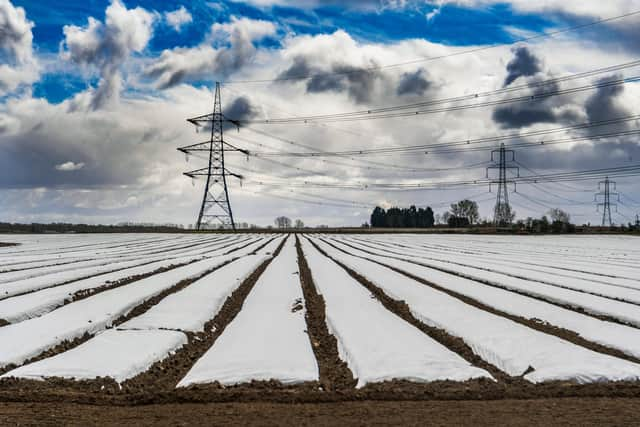Yorkshire one of worst hit areas for damaged food crops as UK prepares to import more to feed nation
A further survey undertaken since AHDB’s Early Bird Survey in November has revealed drastic further reduction in cropped areas. The wet autumn meant lower levels of planting, and continued severe weather resulted in winter losses.
What happens over the next few weeks will be crucial says a senior analyst as it was confirmed that if the weather does not improve the country may have to rely on imports.
The cropping area headlines from the survey are that
Advertisement
Hide AdAdvertisement
Hide Ad

• Wheat is down 15 per cent at 1.463m hectares (the biggest reduction in cropped areas since 2020)
• Oilseed Rape – down 28 per cent at 280,000 hectares (biggest reduction since 1980s)
• Winter Barley – down 22 per cent at 355,000 hectares (biggest reduction since 2020)
• Spring Barley – up 29 per cent at 881,000 hectares.
Helen Plant, AHDB Senior Analyst, and the wheat reduction could be greater, depending on planting of spring wheat.
Advertisement
Hide AdAdvertisement
Hide Ad“Farmers still have the chance to plant crops such as spring barley and oats – but if heavy rain continues, crops will be planted at a point where they may become economically unviable”.
“We are heading to the point where spring sown winter wheat varieties will not be able to develop sufficiently to provide a viable crop. There is a clear intention to plant more spring wheat, but the persistence of wet weather means there is uncertainty about whether this can be done. While the area of spring wheat is small in comparison to the total wheat area, any areas that can’t be planted would further reduce the total wheat area.”
“All parts of the UK have suffered. The East Midlands and Yorkshire and the Humber are reported as the worst affected, with notable flooding in these areas. Less severe impacts are reported for Scotland and Southern England, where periods of less extreme rainfall seem to have allowed more planting to take place.”
Some of the predicted impacts are that the UK will need to import more wheat in the coming year (1/7/24 – 30/6/25) and potentially in 2025/26 with prices are already reflecting this; the yield is at risk of being significantly reduced and that the availability of straw could be reduced, spreading the impact throughout the agricultural sector.
Advertisement
Hide AdAdvertisement
Hide AdDavid Eudall, AHDB Economics and Analysis Director, said: “If we see continued lower production from poor weather, stubborn costs (e.g. fertiliser) and unprofitable prices, we will continually need more imports and further expose our market for a staple product in bread to the world trade.
“A greater reliance on imports means that as global prices rise due to weather or geopolitics, UK food producers using wheat would need to pay a higher price to attract wheat into the country rather than having access to a locally available supply. So while current market conditions are favourable to consumers, they are not supporting farmers who are facing lower incomes and higher costs.”
Comment Guidelines
National World encourages reader discussion on our stories. User feedback, insights and back-and-forth exchanges add a rich layer of context to reporting. Please review our Community Guidelines before commenting.
